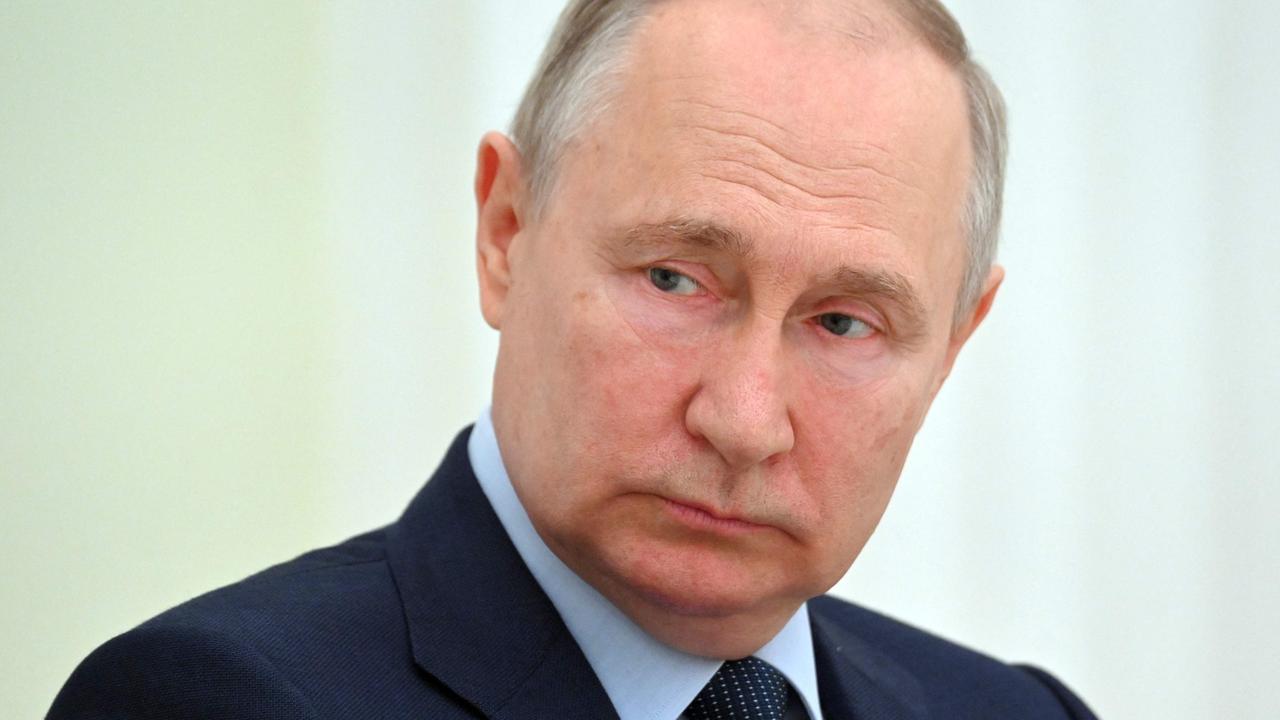[ad_1] Russia’s hound of war is baying for Europe’s blood. But is embattled Defence Minister Sergei Shoigu’s bark worse than his bite?On Thursday, S
[ad_1]
Russia’s hound of war is baying for Europe’s blood. But is embattled Defence Minister Sergei Shoigu’s bark worse than his bite?
On Thursday, Shoigu told his ministry’s governing council that the Kremlin will move to “strengthen troop formations” along its western frontier following Finland’s inclusion in the NATO alliance.
He said Poland had embarked on plans to update and strengthen its military. He warned NATO forces were likely to be deployed in Finland.
He did not say this had all taken place in the 18 months after President Vladimir Putin ordered his forces to cross the border into Ukraine to seize control of the 44 million-strong European democracy.
“The collective West is waging a proxy war against Russia,” Shoigu insisted. He warned its “unprecedented support” for the government of President Volodymyr Zelenskyy in Kyiv “creates serious risks of further escalation of the conflict”.
But he held particular ire for the “serious destabilising factor” of once-neutral Finland joining NATO and Sweden’s ongoing bid to do so.
“On Finnish territory, it is likely that additional military contingents and strike weapons of NATO will be deployed, capable of hitting critical targets in the northwest of Russia at a considerable depth,” Shoigu said.
He then took a swipe at Poland, accusing it of being “the main instrument of the anti-Russian policy of the United States of America”.
“These threats to Russia’s military security require a timely and adequate response,” he said. “We will discuss the necessary measures to neutralise them and make appropriate decisions.”
Cold War warriors
“Today, at the meeting of the Board, we will consider issues related to the creation of the Leningrad and Moscow military districts with the simultaneous strengthening of groupings of troops of the Armed Forces of the Russian Federation on our western borders,” Shoigu told his ministry.
He claims some 360,000 NATO troops are now stationed along the borders of Belarus and Russia. And all of them are hostile to Moscow.
The small former Soviet Union states of Latvia, Lithuania and Estonia have long been targets of Putin’s ambitions to re-establish a Russian Empire. And despite becoming NATO members in 2004, they’ve been repeatedly subjected to Kremlin espionage operations.
Now, fellow Baltic Sea nations Sweden and Finland have taken similar action in response to Putin’s hostile rhetoric.
And Poland has responded to the exile of the disgraced Wagner mercenary force to Belarusian military camps near its borders by deploying 2000 troops to confront any incursion.
Russia has for decades stationed the bulk of its most advanced military units in the Western Military District, centred on the Baltic States.
“Now, many of those forces have been thrown into the meat grinder in Ukraine, where Russia’s army has suffered devastating losses that could take decades to rebuild,” argued Foreign Policy analyst Robbie Gramer.
But the Baltic front, he argues, will likely be rebuilt within months.
“Even if the troops and equipment won’t be of the same quality as those deployed to the region before the war, defence officials say they would be sizeable enough to carry out an incursion into NATO territory.”
Shoigu’s dilemma
President Putin declared his invasion of Ukraine was intended to shatter the NATO alliance.
Now, Shoigu has to contend with an enlarged and more confident opponent.
“Other than the fate of Ukraine itself, the creation of a powerful northeastern bloc in NATO is the most strategically significant fallout for Europe from Russian President Vladimir Putin’s decision to go to war,” Sophia Besch stated in Foreign Policy.
“The contributions of NATO’s newly unified Baltic bloc – the Nordics, the three Baltic States, Poland, and Germany – to European defence will be vital to the resilience of the alliance.”
Russia’s new European military districts were announced in January. At the same time, the Kremlin declared it would expand its military from 1.15 million soldiers, sailors and aircrew to 1.5 million active personnel.
It gave no timeline for that goal to be reached.
But it’s Shoigu’s job to make it happen.
Shoigu, 68, was deeply embroiled in the Kremlin power struggle that led to the Wagner mercenary revolt in June.
And while he’s seen Wagner chief Prighozin deposed, Shoigu still faces mounting discontent among his troops for the disastrous invasion plan and widespread shortages of ammunition, equipment, food and medicines.
But, as recent mass mobilisation and equipment refurbishment efforts demonstrate, Russia’s not a defeated force yet.
“It’s very easy to look and think the Russian military has collapsed or is in dire trouble, but in fact, it’s uneven,” NATO commander General Christopher Cavoli said earlier this year.
“The ground forces are greatly eroded; they have run into big problems.
“On the other hand, they’ve also ingested a lot of people. The Russian army, the ground force, today is bigger than it was at the beginning of this conflict.”
Jamie Seidel is a freelance writer | @JamieSeidel
[ad_2]
Source link



COMMENTS